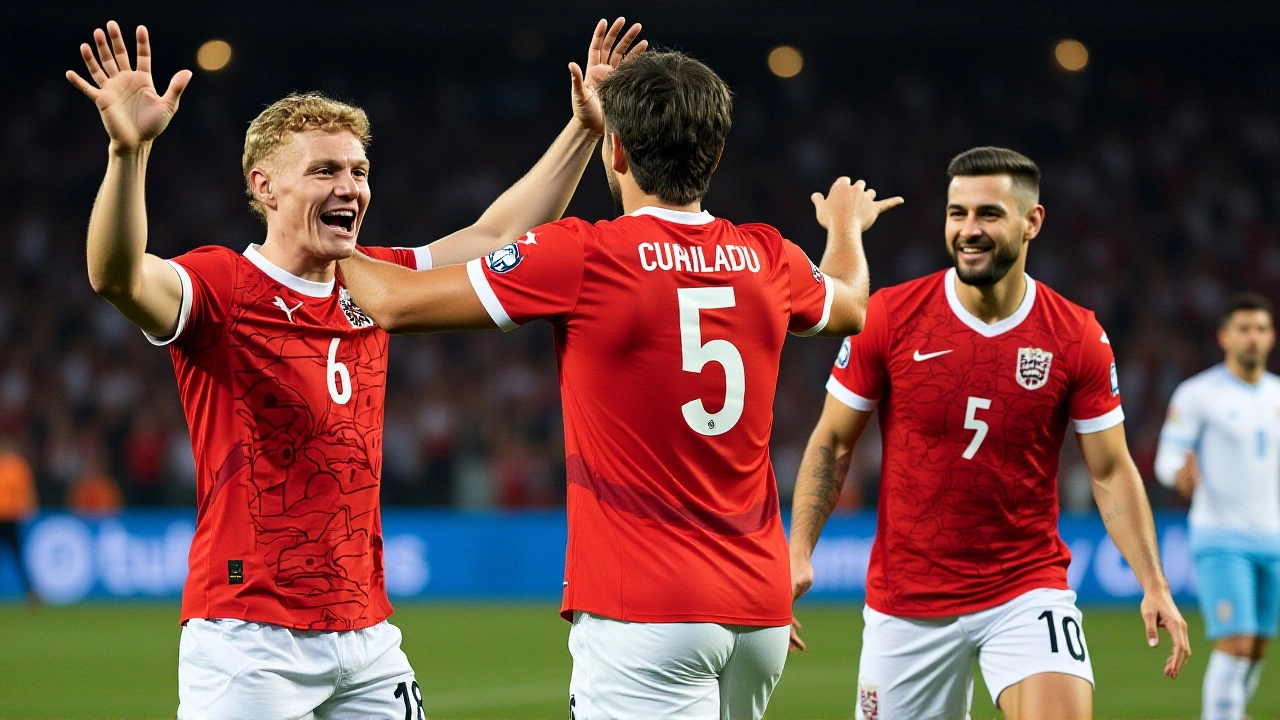
Alexander Isak’s rocky return as Sweden fall 2‑0 to Kosovo
Alexander Isak returns after a three‑month boycott, but Sweden lose 2‑0 to Kosovo in a World Cup qualifier, leaving their hopes hanging.
When talking about World Cup qualifier, a series of matches that decide which national teams earn a spot in the FIFA World Cup. Also known as WC qualifying, it brings together national teams from every continent under the umbrella of FIFA. These qualifying matches can turn a small nation’s dream into reality, while big powers fight to keep their legacy alive.
World Cup qualifier stories are more than scores; they’re a mix of geography, politics and pure sport. The format varies by confederation – AFC groups play home‑and‑away round‑robin, CONMEBOL runs a double‑round robin, while UEFA splits teams into several groups and adds playoffs. Each structure creates a different rhythm, but the core idea stays the same: every match counts toward the final tournament line‑up. Because of this, coaching staff treat each fixture like a mini‑final, tweaking tactics, rotating squads and sometimes even fielding players who normally sit on the bench for club duties.
One key attribute of a qualifier is its impact on tournament seedings. A win against a higher‑ranked opponent can boost a nation’s FIFA ranking, which in turn may affect the draw for the World Cup itself. Another attribute is the timing – qualifiers stretch over two years, meaning players juggle club commitments, international travel and varying climates. For fans, this creates a roller‑coaster of hope and disappointment; for federations, it demands careful squad management and logistical planning.
Recent posts on our site illustrate how the qualifier atmosphere spills into club football. For example, Andorra’s 2‑0 win over San Marino in a friendly shows how smaller sides build confidence before a crunch qualifying round. Likewise, Napoli’s late comeback against Genoa highlights the attacking flair that many national teams hope to replicate on the world stage. Even non‑football stories, like Brazil’s agri‑tech platform launch, remind us that the countries involved are juggling development on and off the pitch, influencing the resources they can pour into their football programs.
From a tactical standpoint, qualifiers often force teams to adapt. A side with a strong defensive record might opt for a low‑block against a powerhouse, while a technically gifted team could press high to exploit any defensive frailty. The presence of seasoned internationals such as Mohamed Salah, who recently drew criticism for his work‑ethic in a club match, underscores how individual form at club level feeds directly into national team performance during qualifiers.
Our collection also covers the business side of the game. The SEC’s approval of new ETF share classes, while unrelated to football, mirrors the financial growth surrounding major tournaments – sponsorship deals, broadcasting rights and merchandise sales skyrocket during the qualification phase. Understanding these economic forces helps fans see why governments and private investors pour money into stadium upgrades and youth academies, hoping to boost their nation’s chances in the World Cup qualifier.
All this background sets the stage for the stories you’ll find below. Whether you’re tracking a surprise upset, analyzing a tactical shift, or simply curious about how a country’s broader developments affect its football ambitions, the articles ahead offer a curated look at the many layers of the World Cup qualifier journey.

Alexander Isak returns after a three‑month boycott, but Sweden lose 2‑0 to Kosovo in a World Cup qualifier, leaving their hopes hanging.

Austria faces Romania in a high‑stakes World Cup qualifier at Bucharest's National Arena on Oct 12, 2025. Winner edges toward the 2026 World Cup; odds, streaming info, and expert analysis inside.